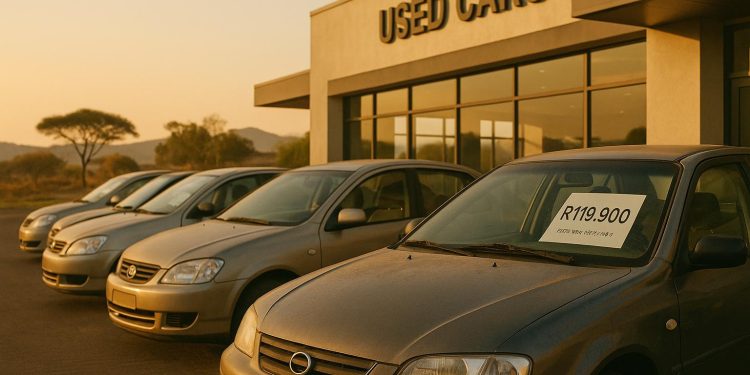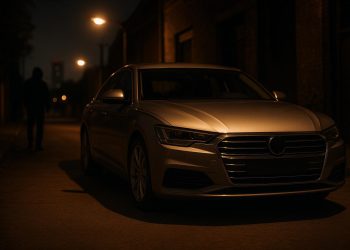Buying a used car? Beware of hidden costs that can turn a good deal into a financial strain. Beyond the sticker price, you’ll face extra expenses like registration fees, roadworthy tests, unexpected repairs, and ongoing insurance costs. Here’s a quick rundown of what you need to know:
- Mandatory Fees: Ownership transfer ($330), roadworthy certificates ($300–$800), and registration ($500–$1,500).
- Financing Costs: Interest rates for loans range from 10%–20%, with added "on-the-road fees" ($4,000–$8,000+).
- Annual Costs: Licensing fees vary by vehicle weight and province, plus insurance premiums based on your profile and coverage.
- Maintenance & Repairs: Routine services like oil changes and tire replacements add up, while surprise repairs (e.g., engine or transmission issues) can cost thousands.
Plan ahead by budgeting for these costs, using online tools, and negotiating smartly. Always inspect the car, review contracts for hidden fees, and set aside an emergency fund to avoid financial stress.
3 Fees You Shouldn’t Pay When Buying a Used Car (If You Want the Best Deal)
Required Fees: Transfer, Registration, and Roadworthy Tests
When buying a used car, the purchase price is just the starting point. There are mandatory fees – like transfer, certification, and registration – that can significantly increase your overall costs. Being aware of these fees is crucial for budgeting effectively.
Car Ownership Transfer Fees
Transferring ownership is a legal step that ensures the car is officially registered in your name, shielding you from future liabilities. Both the buyer and seller must visit the local licensing office to complete this process. The Change of Ownership Fee is capped at $330 as of May 2023, though this amount can vary depending on the province. You’ll need to fill out the Application for Registration and Licensing of Motor Vehicle (RLV) form and submit it within 21 days of purchase. Missing this deadline can result in penalties. Additionally, all outstanding fees, such as unpaid fines, must be cleared before the transfer can proceed. Some administrative charges may also apply.
Roadworthy Certificate Requirements
A Roadworthy Certificate (RWC) is essential when transferring ownership, as it certifies that the vehicle meets minimum safety standards for South African roads. Only government-approved Vehicle Testing Stations (VTSs) can issue this certificate. The inspection, which typically takes 30 to 60 minutes, checks key components like brakes, suspension, tires, windshields, lighting, seatbelts, mirrors, the VIN, and the engine number. The certificate is valid for 60 days, so if ownership transfer isn’t completed within that timeframe, you’ll need to get a new one.
| Vehicle Type | RWC Cost |
|---|---|
| Passenger cars (private) | $300 – $600 |
| Light commercial vehicles | $500 – $750 |
| Minibuses and taxis | $600 – $800 |
| Heavy trucks and buses | $800+ |
| Retest fee (if failed) | $150 – $300 |
Testing fees can vary, often ranging from $500 to $800 per vehicle, with differences of up to $150 for the same type of vehicle depending on the station. Common reasons for failing include worn brake pads, misaligned headlights, chipped windshields, bald tires, leaking fluids, and faulty indicators. If your car doesn’t pass, you usually have 21 days to fix the issues and return for a retest, which may come with additional fees.
Registration Costs
Once the transfer and certification are complete, registration fees are the final required expense. These fees, which include vehicle licensing, vary by province and are influenced by the type and specifics of the vehicle. Typically, they range from $500 to $1,500. To register, you’ll need the original certificate, a valid ID, recent proof of residence, and a completed application form. The licensing office will calculate the exact fees based on your vehicle’s details. Since these costs can change yearly, it’s a good idea to check with your local licensing office for the most accurate information.
Understanding and planning for these mandatory expenses – ownership transfer, roadworthy certification, and registration – can help you avoid unexpected costs and make the transition to car ownership much smoother.
Loan and Interest Costs
When buying a car, the listed price is just the beginning. Financing and additional fees can significantly increase the actual cost of ownership. Understanding how car loans work and the expenses involved is key to avoiding surprises.
How Car Financing Works
In South Africa, used car loans often come with annual interest rates ranging from 10% to 20%. Competitive rates are usually about 2% higher than the prime rate, which currently sits at 11.75%. If your credit score is on the lower side, you could face rates closer to 15%, potentially adding R10,000 or more to the total loan cost over time.
Lenders typically offer two types of interest rate structures:
- Fixed Rates: These provide steady, predictable monthly payments but are generally higher than variable rates.
- Variable Rates: These start lower but fluctuate based on market conditions, meaning your payments could increase if interest rates rise.
Interestingly, most borrowers – 94% of MFC clients, a division of Nedbank – opt for variable rates.
"Fixed rates offer predictability and protection from rate hikes but are usually higher. While prime-linked rates can be lower, they pose a risk of higher repayments if rates rise, complicating budgeting."
- Marelize Lombard, Standard Bank‘s Head of Business Solution Design
Another factor to consider is how interest is calculated. Simple interest decreases as you pay down the loan, while precomputed interest is based on the full loan amount, often leading to higher overall costs.
How Interest Adds Up Over Time
The combination of interest rates and loan terms plays a major role in determining your total costs. Middle-income buyers typically spend about 20% of their monthly income on car installments. While longer loan terms lower your monthly payment, they increase the total amount of interest paid over the life of the loan. Cars with lower mileage or newer models often qualify for better rates.
"It is common for first-time buyers to be caught off guard when interest rates rise. In recent years, the rising cost of living has made this situation even more challenging."
- Doret Jooste, Standard Bank’s Head of Money Management and Advisory
One way to reduce costs is by making a larger down payment – ideally 10% to 20% of the car’s price. This lowers both the loan amount and the interest rate. Beyond interest, it’s important to account for on-the-road fees, which can further increase the total cost of ownership.
On-the-Road Fees
On-the-road fees are a contentious topic in South Africa’s car market, often adding R4,000 to R8,000 – or even more – to the final purchase price. These fees typically bundle various charges, including administrative processing, vehicle registration, and other services.
For example, administrative processing fees alone can range from R1,000 to R5,000 or more. Vehicle registration costs differ depending on how you handle it; in the Western Cape, going directly to the traffic department might cost around R500, while dealerships may charge upwards of R1,500 for the same service.
| Fee Type | Typical Cost (Dealership) | DIY/Direct Cost |
|---|---|---|
| Administrative Processing | R1,000 – R5,000+ | Lower if handled personally |
| Vehicle Registration | R1,500+ | Approximately R500 |
| On-the-Road Fees (Overall)* | R4,000 – R8,000+ | N/A |
*On-the-road fees include various bundled charges.
These fees often include extras like extended warranties or service plans. While these add-ons can provide peace of mind, they may also increase your loan amount and the total interest you’ll pay. It’s worth carefully reviewing these options rather than automatically accepting them.
To keep costs down, always request a detailed breakdown of all fees before committing. Shop around for quotes from multiple dealers and lenders, and consider getting pre-approved for a loan through your bank. This not only strengthens your negotiating position but can also help you avoid inflated dealership financing rates. Additionally, you might be able to negotiate administrative fees or handle some paperwork yourself to save money.
Yearly Costs: Insurance, Licensing, and Annual Fees
Once you’ve tackled the upfront and financing costs of a vehicle, it’s time to think about the recurring expenses that will hit your wallet every year. These include insurance, licensing, and other annual fees that can significantly impact your overall budget.
Insurance for Used Cars
Insurance is one of the biggest ongoing costs for car owners, and what you pay each year depends on several factors. These include the type of car you drive, your personal driving history, how much you drive, where you live, and the kind of coverage you choose.
Your personal profile plays a major role. Younger drivers often face higher premiums due to their lack of experience, while married drivers tend to pay less because they’re considered lower risk. A clean driving record – free from accidents or traffic violations – can also help keep insurance costs under control.
Location and mileage matter, too. If you rack up a lot of miles each year, expect higher premiums. Similarly, living in a high-crime area can increase your rates, as the risk of theft or vandalism is greater.
The type of coverage you select is another key factor. Comprehensive insurance provides the most protection but comes with a higher price tag. On the other hand, third-party coverage is often cheaper, especially for older vehicles with lower values. However, this budget-friendly option could leave you with higher out-of-pocket expenses if something happens.
Insurance costs have also been climbing due to rising prices for parts and labor. To help offset these increases, consider adding security features to your car, such as alarms or tracking devices, which could lower your premiums. An insurance broker can also help you find coverage that matches your needs and budget.
In addition to insurance, you’ll need to account for licensing fees as part of your annual costs.
Annual Licensing Fees
If you own a vehicle in South Africa, renewing your license annually is mandatory. Licensing fees vary depending on your vehicle’s weight and the province where it’s registered. For larger vehicles, the costs can add up quickly.
| Vehicle Weight | Gauteng | Western Cape | KwaZulu-Natal |
|---|---|---|---|
| 1,000-1,250 kg | $29 | $38 | $40 |
| 2,500-2,750 kg | $96 | $86 | $93 |
| Transaction Fee | $4.30 | $4.30 | $4.30 |
On top of the base licensing fee, there’s a $4.30 transaction fee, which has been in place since February 2018. If you choose to renew online, you’ll also need to budget for delivery charges – roughly $1.70 for standard mail or $5.90 for courier service.
You have a 21-day grace period after your license expires to renew it without penalties. After that, a late fee of 1/10th of the licensing cost is added for every month it remains unpaid.
Keep in mind that local authorities don’t send out renewal reminders. It’s up to you to track your renewal date and pay on time. Services like eNATS or other online reminders can help you avoid penalties and save you from waiting in long lines at licensing offices.
Apart from insurance and licensing fees, remember to include smaller recurring expenses in your budget. For instance, regular car washes can cost about $6 or more per visit. Setting aside money each month for these ongoing costs can help you stay prepared and keep your car in good condition year-round.
sbb-itb-09752ea
Repair, Maintenance, and Surprise Costs
When planning a budget for a used car, it’s essential to factor in both predictable and unexpected expenses. While annual fees and insurance are obvious costs, repairs and routine maintenance often catch buyers off guard. Unlike new cars, which often come with warranties, used vehicles typically leave you footing the bill for any breakdowns or service needs.
Common Maintenance Needs
Used cars require regular care, and those costs can add up over time. Some of the most frequent issues include engine overheating, battery failures, tire wear, brake problems, and malfunctioning lights or wipers.
Engine troubles are particularly notorious – and expensive. Problems like oil leaks, timing belt failures, or worn spark plugs can escalate quickly if neglected. For example, fixing engine overheating can cost anywhere from $100 to $6,000. Regularly checking coolant levels, inspecting the radiator, and replacing aging hoses can help you avoid these steep bills.
Battery issues are another common headache. Replacing a dead battery typically costs between $45 and $250, and it’s wise to have it professionally tested for corrosion before replacement.
Other routine expenses include oil changes ($35–$125) and tire rotations ($60–$72). If you need new tires, expect to pay $20 to $100 per tire. Keeping an eye on tire pressure and tread depth can help you dodge more serious – and costly – problems down the road.
Brake maintenance is equally important. Neglecting brake pads or fluid levels not only increases repair costs but also endangers your safety.
Transmission issues, such as slipping or rough shifting, are another potential budget-buster, with repair costs ranging from $2,900 to $7,100. Regular check-ups can help spot these issues early, saving you from a financial hit.
While routine maintenance can be planned for, unexpected repairs often sneak up on you and strain your wallet.
Surprise Repairs and Out-of-Pocket Costs
Beyond regular upkeep, older vehicles are prone to sudden failures – especially since they often lack warranty protection. Electrical problems are becoming more frequent as cars rely heavily on modern computer systems. These issues can be tricky and expensive to diagnose and repair.
Consider this: in South Africa, tire issues are responsible for 73% of accidents caused by mechanical failures, while failing brakes account for nearly 12%. These statistics highlight not only the financial burden of repairs but also the safety risks involved.
The National Consumer Commission receives between 250 and 300 complaints each month about second-hand vehicles, a clear sign of how unexpected repairs can catch buyers unprepared.
Dashboard warning lights are another red flag. According to Dewald Ranft, Chairman of the Motor Industry Workshop Association (MIWA):
"Your car’s dashboard is like a health monitor for your vehicle. Ignoring warning lights could lead to accidents or expensive repairs".
Suspension issues, often signaled by rough rides, uneven tire wear, or leaking hydraulic fluid, are another costly surprise. If left unchecked, they can lead to even more extensive damage.
In 2023, drivers spent an average of 9.83 cents per mile on maintenance, repairs, and tire replacement. For someone driving 15,000 miles a year, that adds up to roughly $1,474 annually – a figure that many used car buyers might overlook when planning their budget.
How to Find and Reduce Hidden Costs
Dealing with hidden costs can feel overwhelming, but with the right strategies, you can identify and minimize these expenses. A little preparation goes a long way in avoiding surprises. Below, we’ll explore practical ways to take charge of your used car purchase.
Using Budget Tools and Checklists
Planning ahead is key. Budget tools and checklists can help you estimate the full cost of car ownership – not just the sticker price.
Start with online finance calculators to figure out monthly payments and compare installment options. You can also use car affordability calculators to set realistic spending limits.
In South Africa, several platforms provide detailed checklists for buying a used car. For example, Cars.co.za offers a step-by-step guide to assess a vehicle, while Jangdas Motors provides a helpful checklist for buyers. A good checklist should include:
| Checklist Item | Description |
|---|---|
| Define your budget | Decide how much you can afford |
| Identify your needs | Consider factors like size, fuel efficiency, and brand |
| Research models | Look into reliability, maintenance, and common issues |
| Check vehicle history | Verify past accidents or debts |
| Inspect the car | Look for wear, leaks, and damage |
| Test drive | Evaluate performance, handling, and comfort |
| Negotiate fairly | Use your research to get the best price |
| Finalize payment | Secure your financing or cash deal |
| Register & insure | Complete all necessary paperwork |
Cars.co.za also suggests using their Used Car Search Tool to compare listings of the same model with similar mileage and condition. If a car is priced significantly lower, it could signal mechanical or cosmetic issues.
Buying from Trusted Sources
Where you buy your car matters. Trusted sellers can help you avoid undisclosed problems and unexpected costs. Established dealerships often provide added transparency and support. While you might pay a bit more upfront, these dealers usually follow stricter guidelines regarding vehicle history and condition.
If you’re shopping online, stick to reputable platforms. For instance, CHANGECARS partners with over 700 five-star-rated dealerships, while Cars.co.za and AutoTrader have lower ratings on HelloPeter. Quality platforms vet dealerships to ensure legitimacy and offer peace of mind.
Private sales might seem like a bargain, but they come with risks. Always verify the seller’s credibility and consider an independent vehicle inspection to uncover hidden issues. Screan, South Africa’s leading independent inspection service, offers a 116-point check. One customer, Roxanne Skosana, shared,
"Screan’s thorough inspection gave me peace of mind when buying my used car. The detailed report showed some issues I could talk down, saving me money."
Also, remember your rights under the Consumer Protection Act, which may include a six-month guarantee on dealership purchases.
Negotiating and Clarifying Costs
Once you’ve set your budget and chosen a trusted source, approach negotiations with confidence. The key is preparation. Research the car’s value based on its model, mileage, and condition. Knowing this information gives you an edge when discussing price.
Set a maximum price before you start negotiating, and stick to it. Begin with a reasonable offer – about 10% below the asking price – and stay patient as the seller responds. If the price doesn’t come down, ask for additional perks like window tinting or extended services. Timing can also work in your favor; dealers may be more flexible at the end of the month or year when they’re trying to meet sales targets.
Use tactics like the "if/then" approach to make your offer more appealing. For example, you might say, "If you include the roadworthy certificate, then I’ll agree to your asking price".
Before signing anything, carefully review the contract for hidden fees or last-minute charges. Make sure any verbal agreements are included in writing. An independent mechanic inspection and a vehicle history report can also save you from costly surprises down the road.
Chad Lückhoff from AutoTrader offers this advice:
"At the end of the day, negotiation is all about balance. Be firm but fair, treat the salesperson respectfully, and don’t let the process become a tug-of-war. You’re looking for a win-win: the car you want at the price you’re happy to pay."
Finally, arrange financing before visiting the dealership to avoid high-pressure sales tactics. Keep negotiations for your new car separate from any trade-in discussions to ensure clarity.
Conclusion: Planning for a Better Purchase
Buying a used car in South Africa isn’t just about the upfront price – it’s about understanding and preparing for all the costs that come with it. Beyond the sticker price, you’ll need to account for ongoing expenses like insurance, fuel, maintenance, and repairs, which can quickly add up.
To make a smart purchase, start with a detailed budget. Include everything: the purchase price, on-the-road fees, insurance, fuel, routine maintenance, and even potential repairs. A pre-purchase inspection is a must – it can uncover issues before they turn into expensive headaches.
When negotiating, aim for an all-inclusive price that covers taxes, documentation, and any additional fees. Always ask for a clear breakdown of costs, and don’t hesitate to walk away if the dealer isn’t transparent. Insist on getting every agreement in writing to avoid surprises later. Planning for the future is just as important. Set aside an emergency fund for unexpected repairs, consider service or maintenance plans, and factor in depreciation when assessing the car’s value over time. Shopping around for competitive interest rates and insurance premiums can also help reduce your monthly expenses.
While a trusted dealer might come with a slightly higher upfront cost, it often saves you from hidden problems and unexpected expenses down the road. By carefully considering all potential costs and planning ahead, you’ll not only drive away with confidence but also ensure your purchase fits your budget for years to come.
FAQs
How can I negotiate hidden fees when buying a used car in South Africa?
To handle hidden fees when buying a used car in South Africa, start by understanding all potential costs. These may include transfer fees, roadworthy certification, and financing charges. Knowing these upfront can help you distinguish between legitimate expenses and unnecessary add-ons.
When it’s time to negotiate, stick to your budget and aim to start with a lower offer, giving yourself room to adjust. Watch out for tactics like fake charges or dealer adjustments, and don’t hesitate to ask for a breakdown of any extra costs right away. Shopping around and comparing quotes from different dealerships can also give you an edge, helping you negotiate better terms and avoid inflated fees.
By staying informed and confident, you can navigate the buying process with fewer surprises.
How can I plan for the ongoing costs of owning a used car, like maintenance and insurance?
To plan for the ongoing costs of owning a used car, it’s essential to factor in key expenses like insurance, maintenance, fuel, and registration fees. Insurance premiums can vary based on the type of coverage you choose and the car’s value, so it’s worth comparing rates to find the best deal. Maintenance costs, which include routine services and occasional repairs, generally average around 2% of the car’s value each year.
It’s also important to consider other expenses, such as tolls, car washes, and unexpected repairs. Keeping an emergency fund specifically for surprise costs can save you from financial headaches down the road. By planning for these recurring costs and incorporating them into your budget, you’ll be better prepared for a more stress-free car ownership experience.
What should I check during a pre-purchase inspection to avoid surprise repair costs later?
When evaluating a used car, start by assessing the engine’s performance. Listen carefully for any odd noises or vibrations, and keep an eye out for fluid leaks. Next, examine the tires for uneven wear, which could indicate alignment issues, and test the brakes to ensure they’re responsive. Don’t forget to check the suspension for signs of damage or excessive wear.
Inspect the car’s body and undercarriage for rust or structural problems, and take a close look at belts and hoses – cracks or wear here could point to potential trouble. Be on the lookout for evidence of past accidents, such as mismatched paint or uneven body panels. Lastly, test all electrical components, including lights, windows, and the air conditioning, to ensure everything is in working order.
Taking the time for a detailed inspection can help you avoid unexpected expenses later on.
Related posts
- Factors That Influence Used Car Prices in South Africa
- New vs Used Cars: Key Pros and Cons
- Used Cars vs New Cars: Cost Breakdown
- Car maintenance costs in South Africa





